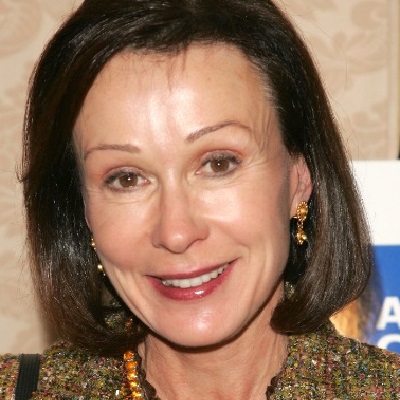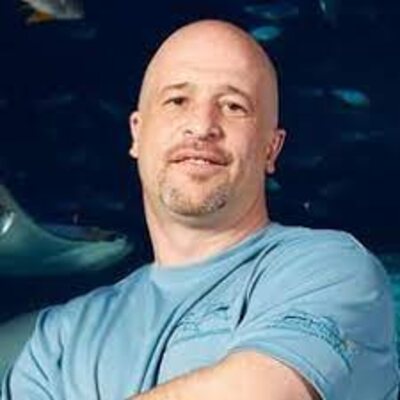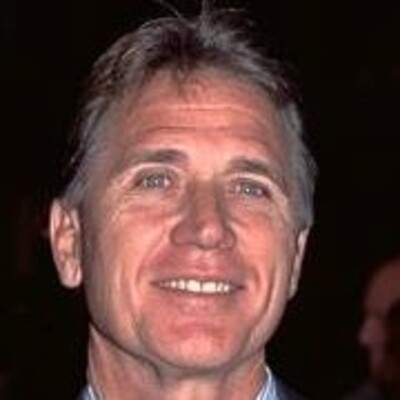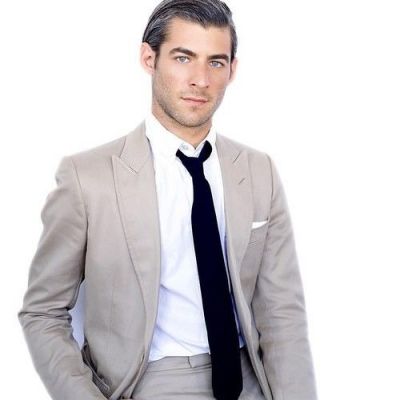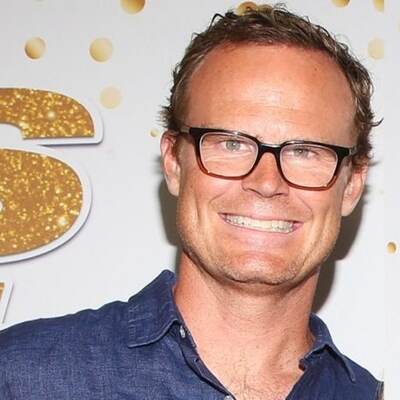Quick Facts of Nolan Bushnell
| Birth Date: | , 1943 |
|---|---|
| Full Name: | Nolan Bushnell |
| Net Worth: | $50million |
| Last Updated: | January 17, 2024 |
| Birth Place: | Clearfield, Utah, Bushnell |
| Profession: | American businessman and electrical engineer |
| Education: | University of Utah's (U of U) College of Engineering |
| Hair Color: | Salt and Pepper |
| Eye Color: | Brown pairs |
Social Media | |
| Facebook Profile/Page: | |
| Twitter Profile: | |
| Instagram Profile: | |
| Tiktok Profile: | |
| Youtube Profile: | |
| Wikipedia Profile: | |
| IMDB Profile: | |
| Official Website: | |
| View more / View fewer | |
Relationship Facts of Nolan Bushnell
| Nolan Bushnell is married to Nancy Nino. |
| He is father of 8. |
| Nolan Bushnell is not having an affair with anyone presently. |
| His sexual orientation is straight. |
What is the relationship of Nolan Bushnell?
Nolan Bushnell was previously married to Paula Rochelle Nielson, he has two daughters from his first marriage, and moved to California in 1969, with Paula Rochelle Nielson. They separated in 1975, shortly before Atari was acquired by Warner Communication.
Nolan Bushnell wed Nancy Nino in 1977, and the two had six kids together. He also bought the former Woodside, California estate of coffee tycoon James Folger with the money he made from selling Atari to Warner.
Despite having been a Latter-day Saint when he was younger, he had abandoned the beliefs by the time of his first divorce, earning the moniker “lapsed Mormon”. He claimed that he ceased to follow the religion after arguing with a professor at the University of Utah over how to interpret the Bible.
Nolan Bushnell: Biography in Details
Table of Contents
ToggleWho is Nolan Bushnell?
Nolan Kay Bushnell is an American businessman and electrical engineer. He founded the Chuck E. Cheese’s Pizza Time Theatre chain and Atari, Inc.
Nolan Bushnell: Bio, Age, Parents, Siblings Ethnicity, education
Nolan Kay Bushnell was born in 1943, in the town of Clearfield, Utah, Bushnell was born into a middle-class family that belonged to the Church of Jesus Christ of Latter-day Saints.
He holds an American Nationality and belongs to a mixed ethnicity.
Less information is known about his personal life, presently there is no data revealed about, his father, mother, and siblings.
Education
Nolan Bushnell went to Davis High School in Kaysville, Utah, a nearby town. In 1961, Bushnell enrolled at Utah State University to study engineering, then business.
He changed schools in 1964 and earned a bachelor’s degree in electrical engineering from the University of Utah’s (U of U) College of Engineering.
He was a member of the Pi Kappa Alpha fraternity. Nolan was one of many 1960s computer science students who used DEC mainframe computers to play the classic Spacewar! game.
Nolan Bushnell: Professional life, Career
Bushnell spent a lot of time working at Lagoon Amusement Park while going to college. Two seasons after he began working there, he was promoted to manager of the games department.
It was during this time that he developed an awareness of the workings of the arcade electro-mechanical games, such as Chicago Coin’s 1969 racing game Speedway, by watching customers play and learning how to maintain the machinery.
Nolan Bushnell was particularly intrigued by the Midway arcade games, where visitors to the theme park would need to employ both talent and good fortune to complete the task and receive the reward. He found it appealing that the idea was to pique people’s interest in the game and then persuade them to pay the required amount to participate.
He worked for a number of companies throughout his time in college, including Hadley Ltd., Litton Guidance and Control Systems, and the University of Utah’s industrial engineering department.
Nolan Bushnell created his own advertising firm, Campus Company, which created blotters for four universities and offered advertising space centered around an events calendar, throughout several summers. In addition, he offered Encyclopedia Americana for sale.
Bushnell had relocated from Utah to California upon graduation in the hopes of landing a job at Disney, but the firm did not generally hire recent college grads. Rather, Bushnell accepted a position with Ampex as an electrical engineer. It was then that he met Ted Dabney, a coworker, and discovered they shared interests.
Bushnell showed Dabney Spacewar at the computing labs of Stanford Artificial Intelligence Laboratory and discussed his thoughts on designing pizza parlors with electronic games.
Bushnell and Dabney founded Syzygy in 1969 with the goal of creating Computer Space, a Spacewar clone. Dabney constructed the prototype, and Bushnell went around trying to find a factory for it.
They reached a deal with Nutting Associates, a company that produces shooting games and coin-op quizzes, and they had them create a fiberglass cabinet with a coin-slot mechanism for the unit.
Despite sales exceeding $3 million, Bushnell thought that Nutting Associates had not properly marketed Computer Space, and he determined that his next game would be licensed to a larger company.
Bushnell was also aware that their intended market would probably consist of inebriated bargoers, thus their next game would have to be easier to play and not require users to read instructions on the cabinet.
Atari, Inc.
The popular Pong game by Bushnell was inspired by the Magnavox Odyssey.
Article main: Atari, Inc.
When Bushnell and Dabney ventured out on their own in 1972, they discovered that the name “Syzygy” was already in use. According to Bushnell, this was the case for a roofing company as well as a candle company owned by a Mendocino hippie commune.
Consequently, they incorporated under the name Atari, which alludes to a position in the game Go that resembles a check, which he has described as his “favorite game of all time”
They hired engineer Allan Alcorn as their second employee and leased their first office on Scott Boulevard in Sunnyvale, California. Bally Manufacturing was hired to create a driving game, and Bushnell’s original goal was to create a game akin to Chicago Coin’s Speedway, which was the most popular electro-mechanical game at his arcade at the time.
Bushnell assigned Alcorn the test project of creating a coin-operated clone of the Magnavox tennis game after seeing a demonstration of the device in Burlingame, California. In an attempt to spur Alcorn on, he pretended to be working for General Electric when, in reality, he only intended to toss the game together.
Alcorn added many of his own tweaks to the design, like having the ball accelerate as the game progressed, and Pong was born. Due to Pong’s enormous popularity, Atari used the game as the foundation of their business, and over the following few years, they released a ton of Pong-based arcade video games.
Following the release of Pong, Bushnell and Dabney fell out of favor with one another. Dabney thought that Bushnell was pushing him aside, while Bushnell believed that Dabney was preventing the firm from making more money. In 1973, Bushnell paid $250,000 for Dabney’s Atari share.
Bushnell surreptitiously had his neighbor Joe Keenan found Kee Games in 1973 to produce near-copies of Atari’s games in order to get more arcade games onto the market and get around exclusivity restrictions set by coin-op game distributors.
Despite Kee’s production, Atari was unable to keep up with the demand for arcade games, and by 1974 Atari was having financial difficulties partly because of the competition in the arcade game market. In September 1974, Bushnell decided to combine Kee Games with Atari before Tank, a completely new arcade game from Kee, was released.
Tank was a popular arcade game that improved Atari’s financial situation. Bushnell continued in his position as CEO of Atari while Keenan assumed the post of president and oversaw operations.
(The home gaming industry would later undergo a transformation thanks to the Atari 2600, but not long after its debut, Bushnell was fired by Atari.
After achieving financial stability, Atari launched its home Pong consoles into the consumer electronics industry in 1975. Atari continued to make variants of its existing arcade games for dedicated home consoles until 1977.
During this period, former Atari employees Steve Jobs and Steve Wozniak had approached Bushnell about investing in their home computer system, the Apple I, which was built from borrowed parts from Atari and with technical support from Atari employees.
They initially offered the design to Bushnell and Atari, but Bushnell wanted Atari to focus on arcade and home consoles. In 1975, Jobs extended an offer to Bushnell for a $50,000 one-third equity stake in their fledgling company, Apple Inc. Bushnell later said, “I was so smart, I said no.
It’s kind of fun to think about that when I’m not crying.” In 1977, Bushnell opened the first Pizza Time Theatre in San Jose, which Atari used to stock its arcade games.
Bushnell directed Atari’s engineers at Cyan Engineering to develop a programmable home console after the company began to face increased competition from arcade and home console manufacturers starting in 1975.
This console was eventually released in 1977 as the Atari Video Computer System or Atari VCS, and later known as the Atari 2600. But in November 1976, the Fairchild Channel F—the first home console to employ game cartridges—was released, ahead of Atari’s finished design.
Bushnell realized that the development of the Atari VCS needed to go more quickly. He looked for a buyer instead of going public as he had first considered. In November 1976, Warner Communications agreed to buy Atari for $28 million, with Bushnell receiving US$15 million.
Warner’s goal was to improve their own failing media properties, so they invested heavily in the Atari VCS, enabling it to be finished early the following year and released in September 1977.
Sales of Atari VCS were limited by Atari’s own supply in their first year of release. The second wave of games in 1983 were more abstract and challenging to market, even though many of the first titles were arcade ports of Atari arcade games.
To help with Atari’s marketing, Warner brought in Ray Kassar, a former vice president of Burlington Industries. Kassar created effective advertising and marketing throughout 1978, positioning the Atari VCS for a larger sales period at the end of the year.
However, Bushnell expressed concerns about Kassar’s plans, fearing that they had produced too many units to be sold. This concern was reiterated at a board meeting with Warner near the end of the year.
Bushnell felt that increasing competition would render the outdated technical specifications of the VCS obsolete, therefore he suggested that monies be allocated to research and development for a new, technologically superior console. Bushnell’s worries were unfounded because Atari VCS sales were fueled by Taito’s Space Invaders at the arcade and Kassar’s marketing.
Early in 1979, Warner Communications and Bushnell both decided he was no longer a suitable CEO and chairman for the business. Warner extended an invitation to Bushnell to continue serving as a creative consultant and director, but Bushnell declined. Before departing, Bushnell paid $500k to Atari for the rights to Pizza Time Theatre. Bushnell was replaced by Keenan, who resigned a few months later.
By mid-1979, Kassar had been appointed CEO of Atari.
Time Theatre at Chuck E. Cheese’s Pizza
Article focus: Chuck E. Cheese
When Bushnell was still employed at Atari, he bought Pizza Time Theatre back from Warner Communications in 1977. Originally designed as a hangout for kids to play video games and eat pizza, Bushnell’s creation served as a conduit for the distribution of Atari games.
Additionally, there were musically-driven animatronic animals at Chuck E. Cheese’s Pizza Time Theatre. Chuck E. Cheese is a tribute to Walt Disney and the technologies the company built; it is well known that Bushnell had always hoped to work for Disney but was consistently turned down for jobs when he initially started out following graduation.
In 1981 Bushnell turned over day-to-day food operations of Chuck E. Cheese’s to a newly hired restaurant operator and focused on Catalyst Technologies.
Bushnell focused on PTT subsidiaries Sente Technologies and Kadabrascope in 1981 and 1982. Sente marked a return to the coin-operated gaming industry.
An early attempt at computer-assisted animation was Kadabrascope. Arcade cabinets would have a proprietary system with a cartridge slot so operators could refresh their games without having to buy whole new cabinets.
Even though Sente was profitable, it was sold to Bally for $3.9 million in 1983 when the restaurants began to lose money, and Kadabrascope was sold to Lucasfilm, which became the forerunner of Pixar.
Bushnell was funding Catalyst at this time by taking out significant loans on his Pizza Time stock. Chuck E. Cheese was facing severe financial difficulties by the end of 1983.
In the fall of that year, President and longtime friend Joe Keenan resigned. Nolan attempted to take control of the situation by attributing the financial issues to the management team’s overstretching, excessive formula tweaking, and market saturation in the local areas.
After his suggested reforms were rejected by the board of directors, he resigned in February 1984. In the autumn of 1984, Chuck E. Cheese’s Pizza Time Theaters—which is presently called after its well-known rat mascot—went bankrupt.
Then, Chuck E. Cheese’s Pizza Time Theatre’s rival family business ShowBiz Pizza Place bought it and took on its debt. After operating restaurants under both trademarks, the newly established ShowBiz Pizza Time unified all of its locations under the Chuck E. Cheese brand by 1992. Over 560 of these restaurants are still open for business today.
Venture Capital Group for Catalyst Technologies
One of the first company incubators, Catalyst Technologies, was started by Bushnell. The Catalyst Group comprised Androbot, Etak, Cumma, and Axlon, among other companies with double-digit numbers.
Axlon successfully introduced a number of consumer electronics items, the most well-known of which being AG Bear, a bear that would repeat back to a child everything they had spoken.
Axlon oversaw the creation of two new Atari 2600 games in the late 1980s, probably as a marketing ploy to spur sales of the system, which was by then almost ten years old. Among these was Motorodeo, a 1990 release with a monster truck theme that was among the final games created for the Atari 2600 system.
The business was mostly acquired by Hasbro.
The maps eventually served as the foundation for other navigation systems, including mapquest.com and Google Maps. Founded in 1984, Etak was the first business to digitize global maps as part of a commercial car navigation system.
In the 1980s, the company was sold to Rupert Murdoch. The Menlo Park, California-based business became a fully owned subsidiary of Tele Atlas in May 2000.
The majority of Catalyst’s businesses eventually failed because there wasn’t enough underlying technology available in the 1980s to support these high-tech advances, even if many of the ideas subsequently led to modern innovations.
One of Catalyst’s companies, CinemaVision, was involved in the development of high-definition television. Using unique vending machines that could write video games onto discs on demand, Cumma attempted to market video games.
ByVideo created the first online shopping experience, enabling customers to virtually order things that would be delivered later, using kiosks and Laser Discs.
PlayNet/Aristo
Following the acquisition of Borta, Inc., where he served as chairman, Nolan Bushnell joined Aristo International as a senior consultant in 1996. Mouli Cohen was Aristo’s CEO and chairman.
In partnership with Aristo, Bushnell launched TeamNet, a line of multiplayer-only arcade machines oriented towards adults, which allowed teams of up to four players to participate either locally or remotely via internet.
] Aristo was eventually renamed PlayNet. Borta Inc. Developed video games included online sports games and variations of Jungle Strike and Urban Strike. Aristo created two main products: a digital jukebox that could store thousands of songs and download new releases, and a touchscreen interface bar-top/arcade system that could make phone calls, access the internet, and host online tournaments.
By late 1997, the company was having financial difficulties and was preparing to withdraw the units it had already released into the market and relaunch the line with upgrades to the credit card swipe system and internet connections.
The company passed away just before the dot-com bubble burst, with its prototype machines still under development.
uWink
Article principal: uWink
Before founding BrainRush, Bushnell was the CEO of uWink, a business that grew out of an early proposal called In10City (pronounced “Intensity”), which was an idea for an eating establishment and entertainment complex.
Bushnell and his business advisor Loni Reeder, who also created the company’s initial logo, founded uWink. The company has gone through several failed iterations including a touch-screen kiosk design, a company to run cash and prize awards as part of their uWin concept, and also an online Entertainment Systems network.
After nearly 7 years and over $24 million in investor funding, the touchscreen kiosks/bartop model was closed amid complaints of unpaid prizes and a lack of maintaining service agreements with locations to keep the kiosk/bartop units in working condition.
The most recent iteration, which debuted in 2005, is an interactive entertainment restaurant named the uWink Media Bistro. Its concept is based on his previous ventures, Bots Inc., which developed autonomous pizza delivery robots for Little Caesars Pizza and Chuck E. Cheese, as well as similar systems of customer-side point-of-sale touch-screen terminals.
The idea was for patrons to use the displays at each table to purchase their food and beverages. These screens would also allow them to watch brief videos and play games with one another.
Video games with multiplayer networks that enabled table-to-table communication or even group play among tables never took off.
Visitors frequently observed the OSX-based computer being restarted in order to play somewhat easier casual video games. The restaurants’ placement was another element that might have contributed to their demise.
The Hollywood location was virtually buried with little visibility on a higher level of a shopping center complex, while the Woodland Hills location was on the second floor of a suburban mall.
On October 16, 2006, the first Bistro opened its doors in Woodland Hills, California. A second in Hollywood was constructed, and in 2008 the company opened a third Southern California restaurant and one in Mountain View, California.
All the locations have subsequently closed.
SA Atari
Article main: Atari, SA
Atari stated on April 19, 2010, that Tim Virden and Nolan Bushnell would be joining the board of directors.
VR Modal
In addition, Bushnell is among the creators of Modal VR, a business that creates transportable, expansive virtual reality systems for businesses to train security personnel, for example.
LLC Anti-Aging Games
Nolan is a co-founder and member of the advisory board of Anti-AgingGames.com, which offers online memory, focus, and concentration games to healthy individuals over the age of 35.
Brainstorm
He is the founder, CEO, and chairman of BrainRush, a firm that creates educational software using video game technology. 2012 saw venture capital funding for the business.
The premise behind it is that a lot of curricular lessons can be made into minigames. Any body of knowledge, including multiplication tables, chemical tables, geography, foreign languages, English language arts, and human anatomy, can be gamified by developers.
BrainRush has created an open-authoring system that enables people to quickly create games in a variety of topic areas. They refer to their core technology as “Adaptive Practice.”
BrainRush conducted a study on vocabulary learning in the Spanish language with 80,000 students and over 2200 teachers nationwide between 2010 and 2012, and the results showed an 8–10 times faster learning rate than traditional learning.[citation needed] In the fall of 2013, BrainRush launched the full platform.
The CSE-GGAM.U is Global Gaming Technologies Corp.
Nolan assumed the roles of CEO and Chairman of Global Gaming Technologies Corp., a publicly traded corporation, on March 6, 2019.
Net Worth and Annual Salary
As of 2024, Nolan Bushnell’s net worth is assumed to be around, $50 Million dollars.
Height, Weight, and Body Stats
His precise Height. Weight is missing at the moment; besides he has a fair skin complexation with salt and pepper hair color with brown pairs of beautiful eyes.
Also, read more about Isaac Keys, Lincoln Palomeque, Leigh McClendon


